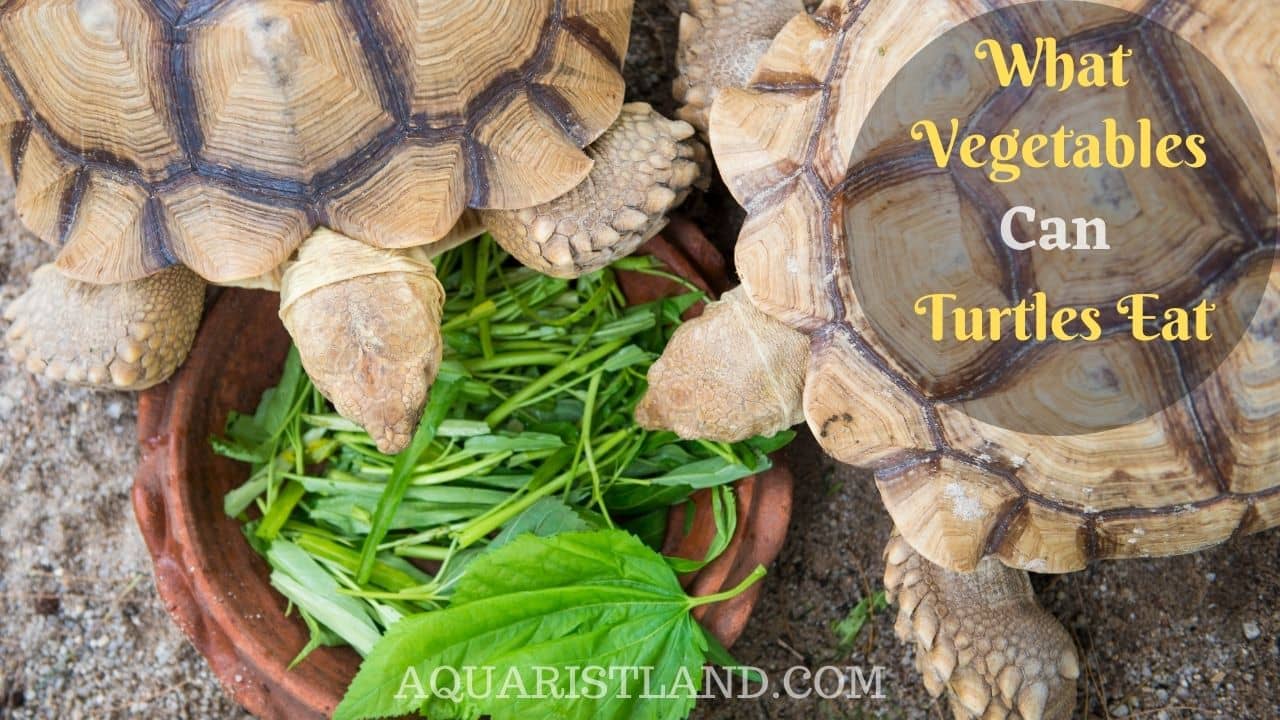As you may know, turtles are omnivorous species that eat and need both vegetables/plant matter and meat-based foods. To create a healthy diet, you need to combine all types of foods on the menu. Moreover, turtles love vegetables. So, now the question appears- What Vegetables Can Turtles Eat, or What Vegetables Do Turtles Eat?
First of all, turtles aren’t picky eaters. So, they’ll eat almost anything you offer if it fits in their mouth. However, the common vegetables that turtles can eat are- dark leafy greens like Collard greens, Carrot tops, Endive, Swiss chard, Mustard greens, Parsley, Escarole, Elodea, Duckweed, and some other vegetables like- Bell peppers, Green Peas, Corn, Okra, Cactus, various Squashes, Green beans, Cauliflower, etc.
Other than these, you can feed many more different vegetables to a turtle. But, not all of them are safe to feed continuously. And we’ll be going to talk about it too.
Also, we’ll discuss the things like- how to feed vegetables to turtles, how often I should feed my turtle vegetables and at what amount, and more in this blog post. So, without further ado, let’s get started.
Can you feed turtles veggies
Before going to our main discussion, we should know whether you can feed vegetables to a turtle or not. The answer is yes. Feeding vegetables to pet turtles is not only allowed but also suggested by veterinarians. Vegetables should hold around 50-60% of the total diet with 30-40% commercial food and protein.
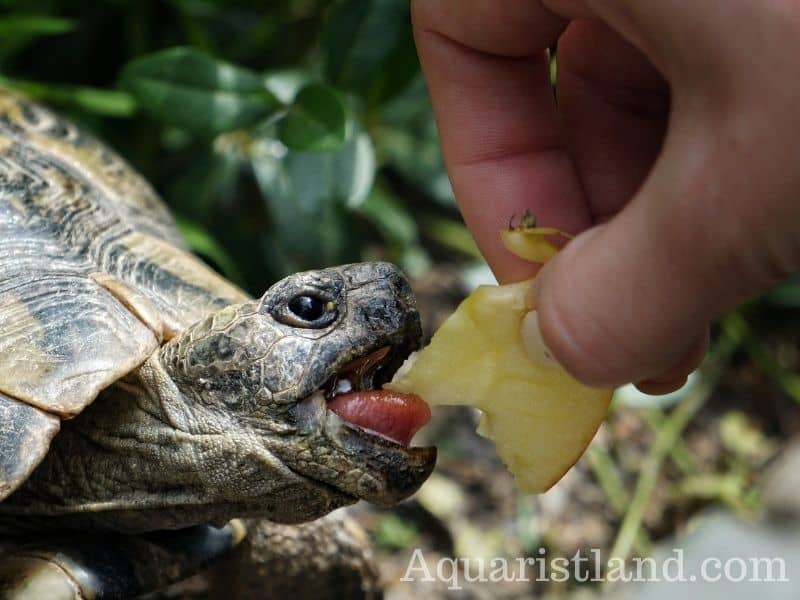
By vegetables, we mean all sorts of leafy greens and other vegetables. Also, you can offer fruits as a treat and occasional nutritional supplements to your pet turtles. However, vegetables are the main source of calcium for turtles, and this species loves them.
What vegetables can/do Turtles eat:
As we know, turtles can eat both plant and meat-based foods that they can bite and digest. And you could say- turtles can eat nearly all sorts of vegetables you can offer properly. Moreover, vets recommended amount of vegetables for your pet turtle is more than 50% of the total diet. So, it’s the main food of this reptile species.
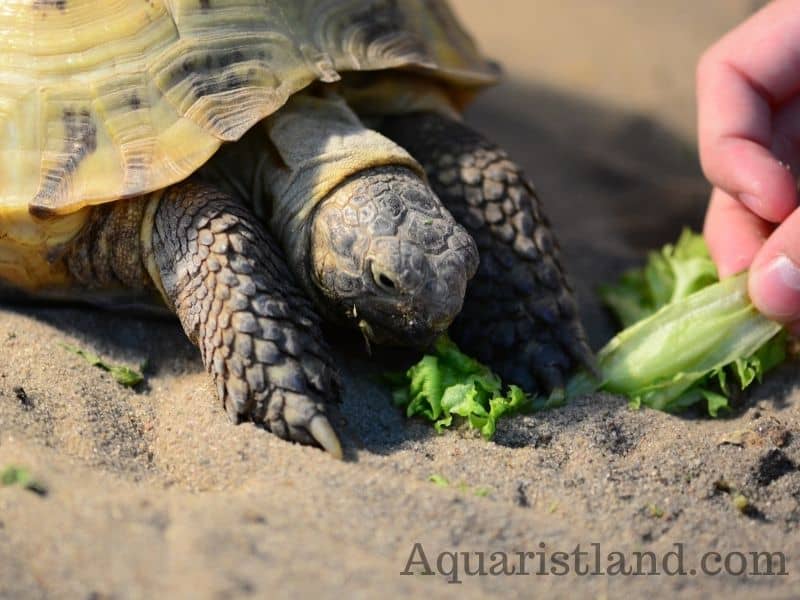
Whatever, we can divide the turtle’s eating vegetable list into two groups. One is the “leafy greens,” and the other one is “remaining vegetables.” First, let’s have a look at the leafy greens’ list that a turtle can eat:
- Kale
- Dandelion Greens
- Cabbage
- Mustard Greens
- lettuce (romaine, red leaf, and green leaf)
- Aloe vera
- Spinach
- Parsley
- Hyacinths plants and Flowers
- Escarole
- Endive
- Elodea
- Duckweed
- Collard greens
- Swiss chard
- Turnip greens
- Alfalfa hay
- Bok choy
- Carrot tops
- Chives
- Elodea
- Frogbit
- Hibiscus leaves and Flowers
- Clover
These are the common leafy vegetables that a turtle can eat. Also, you can offer other leafy vegetables too. However, before giving any greens, you must check their nutritional value.
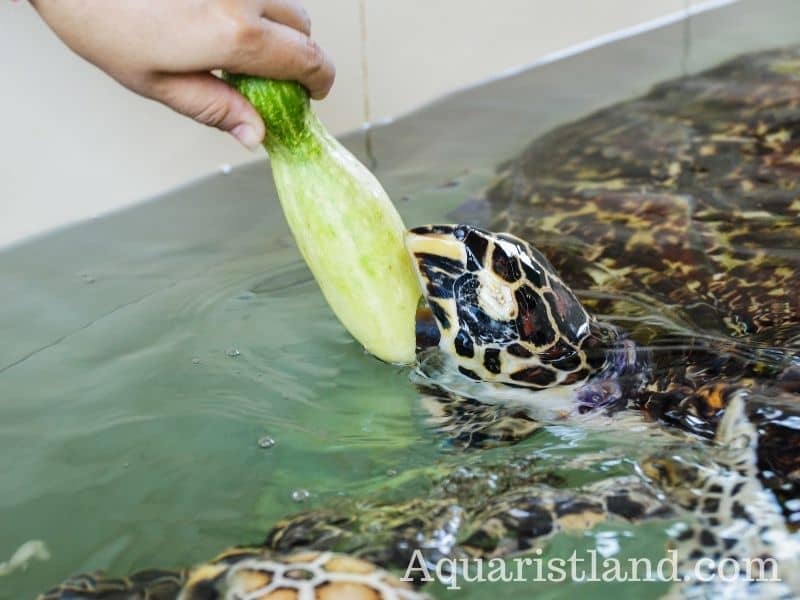
Now, other than those, the remaining vegetables a turtle can eat are:
- Carrots (raw in a small amount/steamed or boiled)
- Cooked Sweet Potato
- Tomato (Only Red Ones)
- Pumpkin
- Squash
- Cauliflower
- Green Beans
- Cucumber
- Green peas
- Prickly pear
- Bell peppers
- Zucchini
- Corn
- Okra
- Cactus
- Cabbage
- Broccoli
- Yams
Well, other than the mentioned ones here, you can try other available vegetables. Check the nutrition value before serving and whether it has any side effects on the turtles. You can also offer different types of fruits and flowers. But, that’s not our today’s topic.
Offer them a little for a new one, and check how the turtles are accepting it. If they’re happily munching, then you’re good to continue within the regular diet.
If you’re wondering What Do Turtles Eat In A Pond, read here.
How to feed vegetables to turtles/How do you feed turtle greens
Now, if you’re wondering how to feed the turtles veggies, it’s simple. The best way to serve vegetables is by shredding or chopping them into smaller pieces and offering them. Boiled or steamed vegetables are also fine. However, the cooked ones aren’t likely to interest this reptile species.
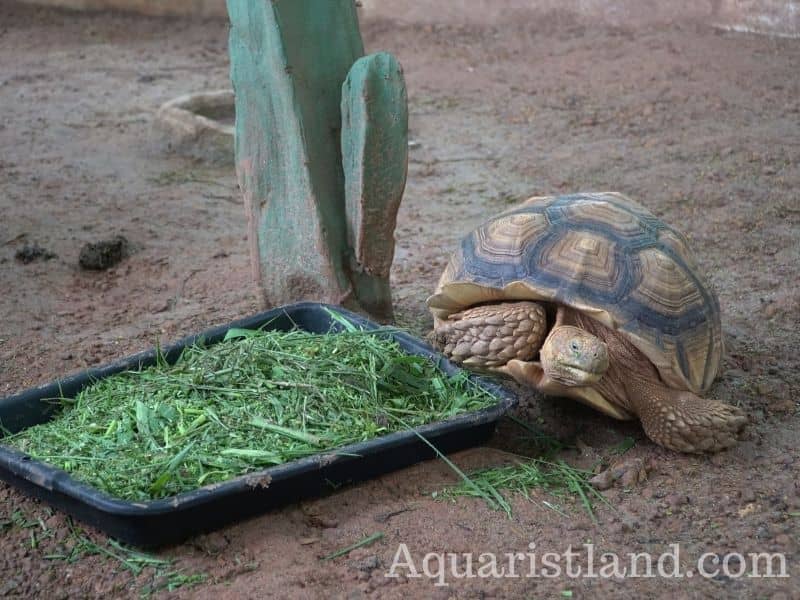
But, just like us, the taste and preferences will vary from turtle to turtle. So, find yours. First, serve them as raw or boiled, and observe what they’re doing. If the turtles are avoiding it, remove it from the tank or water, and try another method. Otherwise, you’re good to go.
For carrot and broccoli, raw contains high sugar. Therefore, steamed or boiled is the preferable way to offer them to a turtle. And no need to mention, every single vegetable needs to be thoroughly washed and cleaned.
You can leave the prepared vegetables in the water and remove the remaining after eating. Alternatively, you can remove the turtle from the tank and serve the food in a different dry location. But remember that not all turtles like to be moved from their home to eat.
However, if your turtle isn’t like to eat vegetables, there’s an alternative way to give them the nutrition they need. You can feed the vegetable pellets to your reptile buddy. If you’re looking for a suggestion, here’s our recommended best vegetable flavored turtle food pellet that has 6:4 (vegetable/meat).
How often and How much should I feed my turtle vegetables
As we’ve mentioned before, the best diet for an adult turtle consists of around 60% vegetables. It’ll be a different case if you have a baby turtle. Hatchling needs more than 70% protein and calcium. Therefore, they need more meat-based food than vegetables.

Turtles can do fine about once a day feeding. Hence, your offering should contain around 60% vegetables for an adult and 20-30% for a hatchling. But, don’t bore them with the same food every day, change the diet a bit every now and then.
However, if you’re feeding pellets, then offer food twice a day. And let them eat no more than 10 minutes. After that, remove the remaining foods from the tank or water.
Moreover, you can divide a week like 4 days vegetables and 3 days meat-based food. So, it’ll be like 1-day vegetable, the next day other foods, after that day, it’ll be vegetable again. Hence the cycle continues.
Can I feed my turtle Only vegetables
Now you already know, vegetables are the main food for adult turtles, And baby turtles also need vegetables too. But, can you feed the turtles only vegetables?
The simple answer is yes. But, you shouldn’t feed only vegetables continuously. Vegetables don’t provide enough protein to keep a turtle healthy and active. It needs meat-based food too. And If you happen to have a hatchling, only vegetables can’t give them proper growth nutrition.
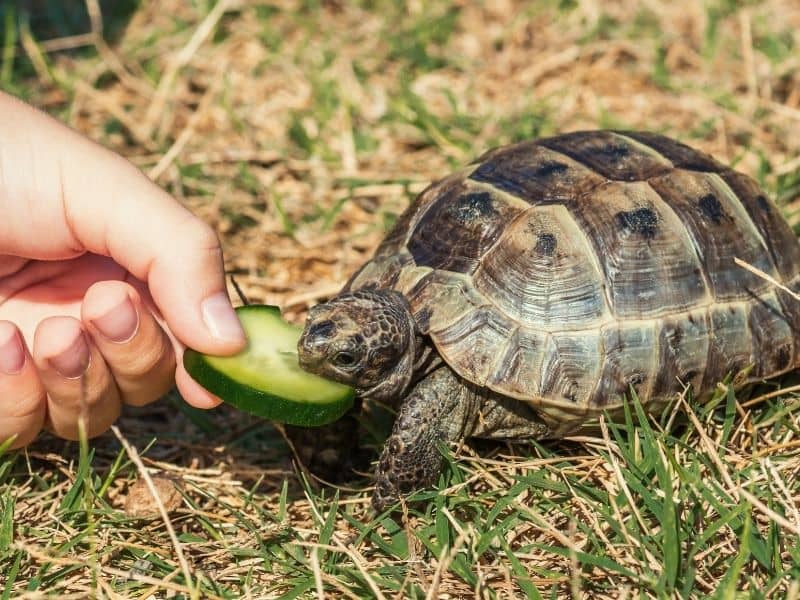
Therefore, they may grow weak and vulnerable to different diseases. A healthy diet must contain both types of foods. And the amount will vary according to their age and taste preferences. Moreover, only vegetables can make them apathetic in eating.
Why You Should Give your Turtle a Variety of Veggies:
Every vegetable has its own nutrition value. Different veggies offer a wide range of nutrition. A single vegetal can’t give turtles all the required nourishment. To understand it more precisely, let’s look at the two different vegetables from our turtle’s vegetable list.
Leafy green Kale contains calcium, fiber, antioxidants, iron, vitamin A, K and C, and more. On the other hand, bell pepper is high in calories than Kale and has protein, carbohydrates, fiber, carbs, and Vitamin B6, A, and more.
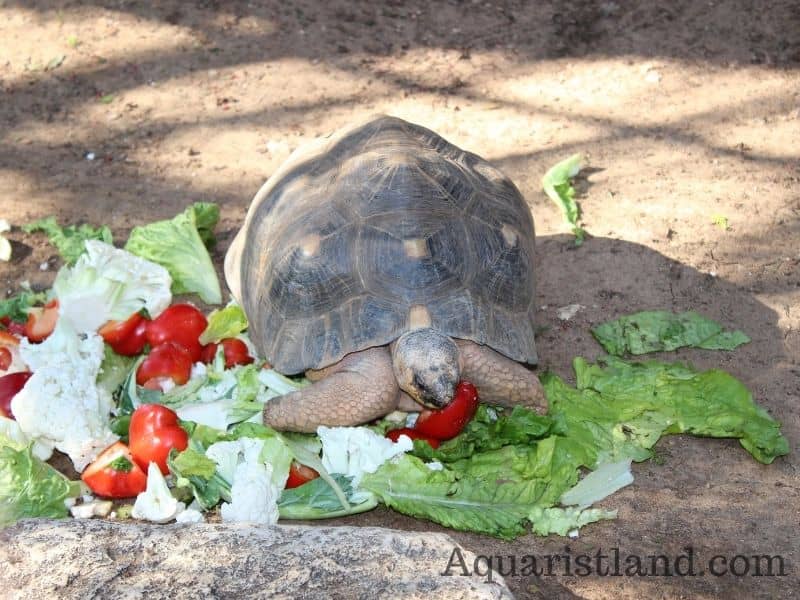
Therefore, a single vegetable isn’t good for health for either you or your turtle. Like us, turtles need different food nutrition too. Moreover, with the same type of vegetable every day, it’ll make turtle apathy in eating.
Do aquatic Turtles eat different vegetables
All types of turtles love dark leafy green vegetables. And the aquatic turtles aren’t different. Their taste and preference level are nearly the same. However, the aquatic ones could show more interest in vegetables like duckweed, water lettuce, water hyacinth, and similar vegetables.

But, you shouldn’t be worried about this matter. Just try the vegetables we mentioned above here, and adjust the diet according to their preferences. We believe that’ll be enough for any kind of turtle species.
Which vegetables aren’t good for Turtles, or toxic to Turtles
So far, we’ve discussed what vegetables you can feed turtles, how to feed, and some health benefits. But you also should know that there are a few vegetables that aren’t good for a turtle’s health. Or feeding them an excessive amount causes health issues. Such as-
Head and Iceberg lettuce contains a high amount of water and only a little nutrition. Hence, they give a scanty health benefit. Therefore, try to avoid these as much as possible. Also, we mentioned before that raw carrots and broccoli contain a high amount of sugar, which can be hard for the turtle to process.
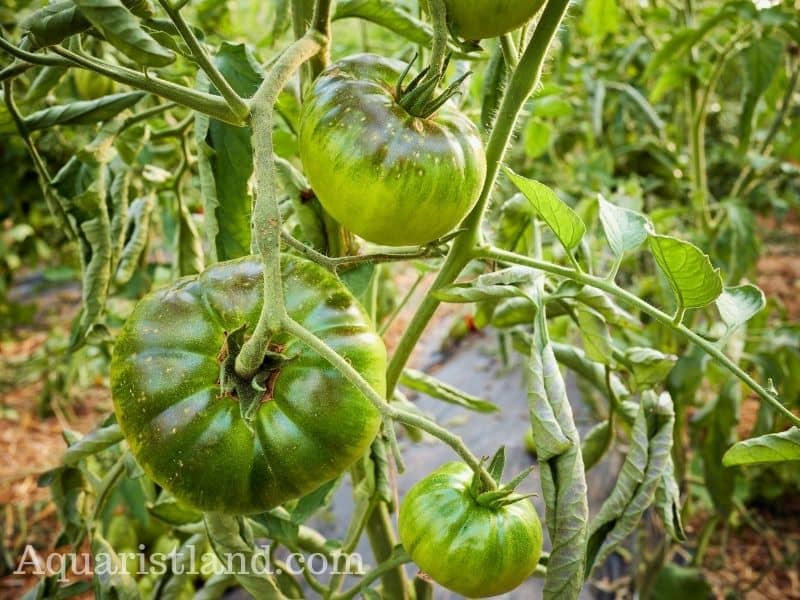
Chard, Rhubarb, and Spinach can block the absorption of calcium for turtles. Excessive or regular consumption of Broccoli, Cabbage, and Bok Choy can cause kidney disease and goiter problems. Moreover, Collard green can create digestive problems for this reptile species.
Ohh, another one I forgot to mention, Tomato. Yes, turtles can eat and love tomatoes. However, only ripe red ones are safe. Green tomatoes aren’t safe for them. And the same goes for the leaves and vines. They’re poisonous to turtles and can cause trauma to various problems.
So, avoid the green tomatoes, or it’s plant matters. Other than this, the remaining vegetables mentioned are safe to feed. However, carrot, broccoli, carrot, head and iceberg lettuce, chard, rhubarb, spinach, cabbage, and Bok choy need to be mixed with other foods or fed occasionally.
Are all the Turtle species Eat similar Vegetables (Box, Red-Eared, Painted, Neck, Musk, Snapping, Aquatic):
Well, most of the turtle species can eat similar types of vegetables. But, the preferences may vary from one species to another, even within the same species. So, try different vegetables every now and then with a small amount. If they like to eat that, then continue that vegetable in the diet.
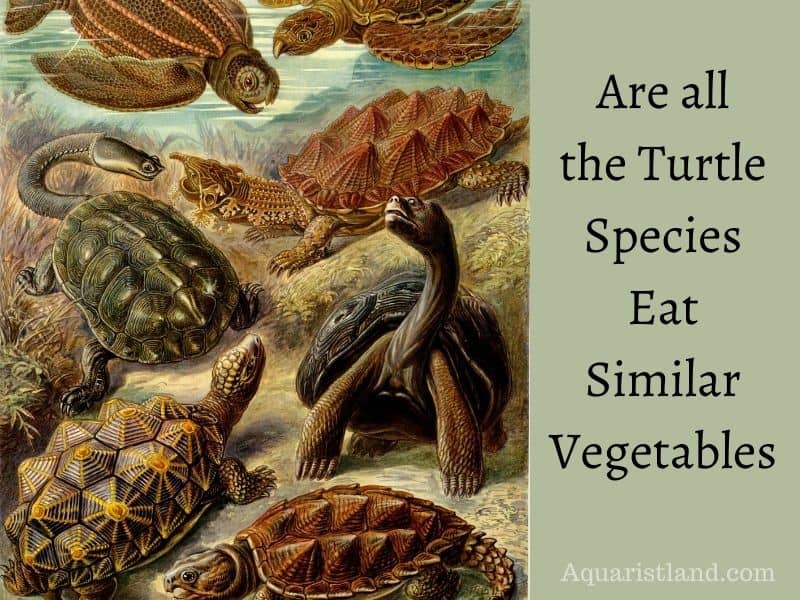
Therefore, whether you’ve Box, Red-Eared, Painted, Neck, Musk, Snapping, Aquatic, or any other turtle species, you can try our given vegetable list from the above. And the toxic vegetables mentioned in the previous topic are the same for every species.
Final Words:
Vegetables are the major source of calcium for turtles. And the diet of an adult turtle comprises 60% or more vegetables and around 30% for a hatchling or juvenile. So, what vegetables can turtles eat– they can eat almost every common vegetable we have, from dark leafy greens to other vegetables.
Turtles prefer dark leafy green vegetables like kale, greens, spinach, etc. However, the other vegetables are fine too. But, green Tomato or its plant matter is toxic for turtles. Also, carrots, broccoli, and a few leafy greens should be offered cautiously.
Moreover, don’t be shy to add a new vegetable to the list. Just try it in a small amount before continuing it in the diet. And please share your valuable knowledge if you want to add one or two to this list. It’ll be helpful for the other readers and us as well.
Image Source: Canva

